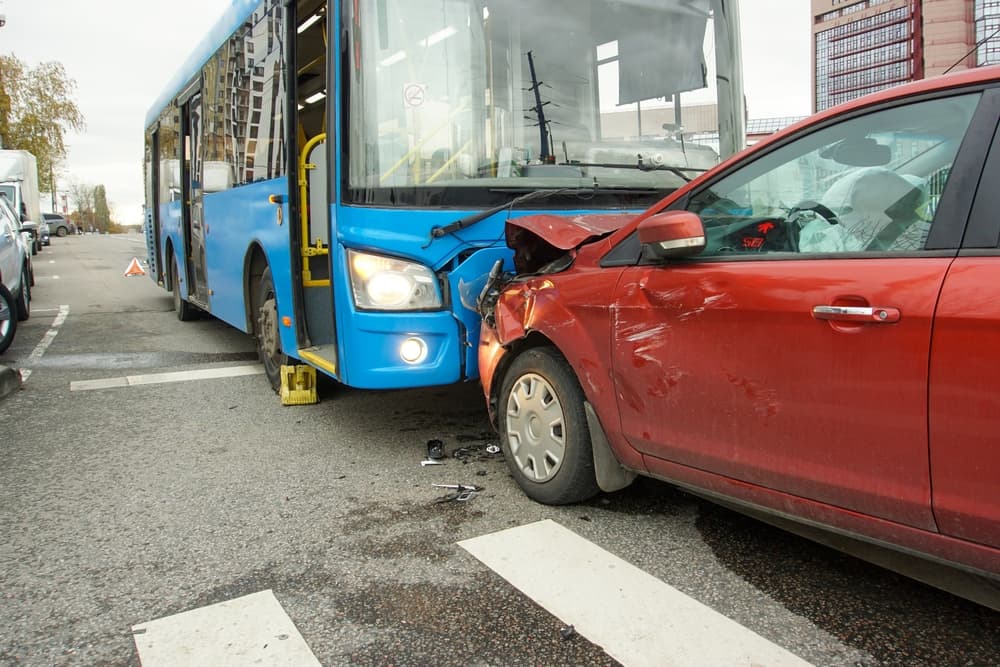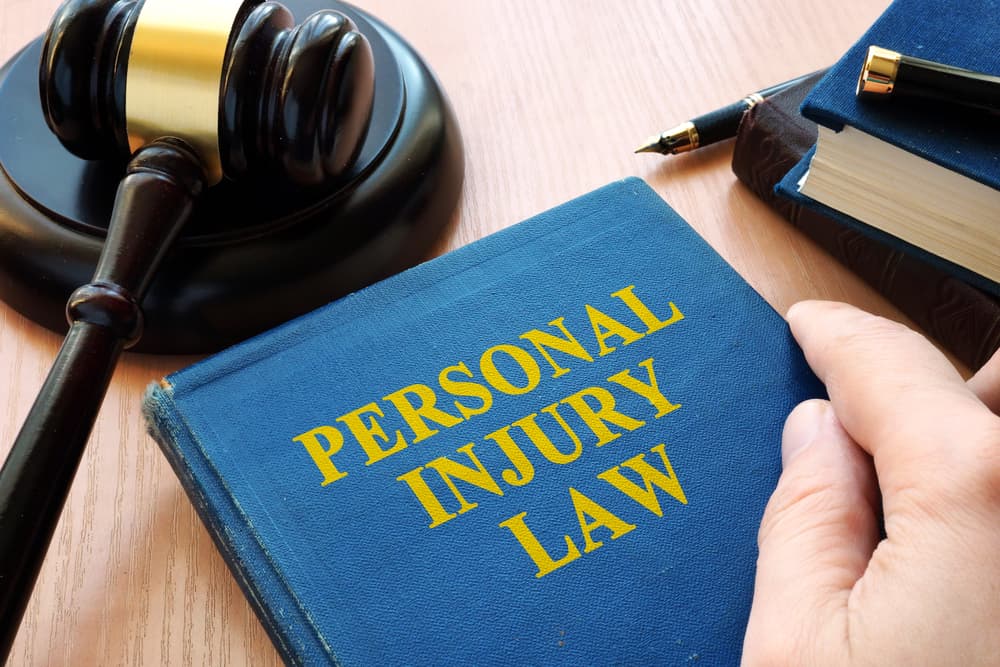Philadelphia is one of the largest cities in the United States, sitting at the number six spot, just behind other major cities like New York and Los Angeles. With so many full-time residents in the city and the many visitors the city sees every year, roads are heavily congested in Philly at any given moment.
Several dangerous roads and highways exist throughout Pennsylvania, some of which are right in Philadelphia, including Interstate 676. Even with care and caution, accidents happen frequently on this highway, resulting in serious injuries and sometimes even death.
After a crash on I-676 or anywhere else in the city, consult a Philadelphia car accident lawyer who can assess your legal options.
Get A Free Consultation Today!
About Interstate 676

Interstate 676, also known as the Vine Street Expressway in Philadelphia, traverses through Philadelphia and into New Jersey. It begins at an interchange with Interstate 76, another very well-known dangerous highway, and heads east. It extends into New Jersey, ending in Gloucester City.
I-676 only extends for 6.9 miles. While only a short stretch of highway, accidents are a common problem. A simple internet search yields various results detailing collisions involving one or more vehicles, road closures due to car crashes, and unfortunate fatalities.
Causes of Accidents on Interstate 676
Driving on the highway is an entirely different experience than driving on the street. Accidents happen frequently on highways for several reasons, often involving driver negligence. Drivers regularly feel more open to driving aggressively and engaging in dangerous driving behaviors. Other factors can also contribute to accidents, like weather and road conditions.
Some of the most common causes of car crashes on interstates, including I-676, include the following.
Speeding and Aggressive Driving
Speeding is a significant issue on any road, from rural to urban. However, drivers feel more confident going above the posted speed limit on highways.
Speed limits are posted for a particular reason. They represent the safest speed drivers should go to avoid potential accidents. Speeding is particularly dangerous under certain circumstances, like rain and snow.
When drivers speed, they increase the chances of causing an accident. They are also more likely to lose control of their vehicles and collide with others with greater force. Additionally, vehicle protective features, like seatbelts, aren’t as functional in an accident caused by speeding.
Speeding is a form of aggressive driving. Other aggressive driving actions include tailgating, weaving in and out of traffic lanes, and brake checking. Drivers are more likely to drive aggressively when experiencing road rage.
Aggressive driving is often confused with reckless driving, but reckless driving is even more serious. When people drive recklessly, they drive in a manner that shows no respect for others' lives. In many states, reckless driving is a punishable criminal offense.
Distracted Driving
Multitasking is a wonderful skill, but not while behind the wheel of a car. Distracted driving often involves drivers taking their eyes off the road, hands off the wheel, and minds off the task at hand.
Visual distractions cause you to turn your eyes away, including using your phone to text or email, changing the song, or looking for a fallen item. Manual distractions require you to remove one or both hands from the steering while, such as eating, grooming, and smoking. Finally, cognitive distractions, including daydreaming and talking on the phone, distract you mentally.
Not only does distracted driving put drivers in danger but also others around them on the road. Distracted driving is one of the leading causes of accidents, with hundreds of thousands of accident injuries and about 3,000 fatalities every year.
Impaired Driving
Driving while under the influence of alcohol and other substances is illegal in every state, and with good reason. Driving while impaired significantly impacts your driving ability, increasing the likelihood of causing accidents.
Alcohol affects the body in a way that makes it nearly impossible to drive safely. Even just one drink can have some effect. Some of the most notable ways impairment affects driving include:
- Decline in visual functions
- Reduced coordination and concentration
- Difficulty steering
- Diminished perception
- Lowered alertness
Driving under the influence can cause drivers to drive erratically and dangerously, often speeding, failing to stop when necessary, and driving recklessly.
Fatigued Driving

Surprisingly, lack of sleep can have similar effects on the body as alcohol. Feeling tired can affect a person’s reaction times and visual functions and make it more likely they’ll doze off behind the wheel.
Fatigued driving can be an issue for any driver, but especially truck drivers. Trucking is a tiring profession, and truck drivers are often required to drive long hours with little rest. Even though federal regulations do not allow for excessive drive times, some trucking companies overwork their drivers to the point of exhaustion, increasing the chances of highway accidents.
Hazardous Road Conditions
Road conditions can play a substantial role in accidents. Dangerous conditions can affect drivers on any street, but especially on a highway, where driving speeds are greater and it takes more time for drivers to stop.
Some of the most common kinds of road conditions that regularly contribute to highway collisions include:
- Potholes
- Cracked, uneven roads
- Shoulder drop-offs
- Loose gravel and debris
- Inadequate merging lanes
- Broken or missing road signs
Risky road conditions are often enough to cause collisions, but mixed with other factors, like negligent driver actions, accidents are inevitable.
Vehicle Defects and Malfunctions
Many parts go into making a car run and keeping it running. At any given moment, vehicles can suffer from malfunctions and defects may become evident.
Defects and malfunctions can involve any of the following:
- Tires
- Airbags
- Steering
- Brakes
- Accelerator
- Fuel system
- Engine
Vehicle issues often occur while driving, which can cause you to lose control of your car. The situation can be made worse by driving at high speeds on the highway.
Types of Interstate Collisions

Accidents on the interstate can be much worse than collisions on the road. Depending on the circumstances, some of the common types of accidents on highways include:
- Head-on collisions: Head-on accidents often result when a vehicle is on the wrong side of the road; this regularly occurs in drunk and fatigued driving accidents.
- Rear-end accidents: A rear-end collision is one of the most common, happening frequently due to driver inattention and speeding.
- Multi-car pile-ups: Because cars travel at high speeds on highways, accidents involving multiple cars are not uncommon. These collisions are usually serious, resulting in substantial injuries, death, and road closures.
- Sideswipe collisions: Sideswipe accidents, which involve one car colliding with the side of the other car, are typically the result of lane weaving and failure to look at blindspots while merging or switching lanes.
- Rollover accidents: Rollover collisions are more common on highways, especially because speeding can create such force that it causes a vehicle to overturn. These types of accidents commonly result in catastrophic injuries and deaths.
- Merging collisions: When there isn’t enough room to merge, or vehicles fail to yield as they should, accidents are more likely to occur.
Collisions can vary in severity, and certain details, like speeding, can worsen the impact, causing more extensive injury and damage.
Injuries Often Resulting from Accidents on the I-676
Accidents on the highway frequently end in significant, life-threatening injuries. Some of the injuries most common in interstate collisions include:
- Severe burns
- Traumatic brain injuries
- Spinal cord injuries
- Crush injuries
- Internal injuries
It’s not uncommon for highway crash injuries to result in complications, which can affect victims in the long term. Consequences of these injuries may include brain damage, paralysis, and amputations.
Suffering such extensive injuries can impact your life in general, including your ability to work. Couple that with expensive medical bills, and you’ll likely be in a compromising financial situation.
Injuries intensify the need to pursue compensation in a car accident claim. Obtaining monetary recovery can help ensure you can afford your present and future medical needs and carry your accident-related financial burdens.
Liability for Collisions on Interstate 676
Determining liability for a highway accident requires first figuring out why the collision occurred. Was it caused by speeding or dangerous road conditions? Were multiple parties involved? All of these details matter when trying to answer the question of fault.
Parties often found at fault for interstate auto accidents include:
- Car and truck drivers
- Drivers’ employers
- Trucking companies
- Governmental entities
- Maintenance and repair companies
- Product designers, manufacturers, and distributors
Many highway accidents result from negligence. When a party is negligent, it means they have failed to act reasonably, considering the circumstances. Proving a party’s negligence requires satisfying the necessary elements, including duty, breach, causation, and damages.
So, for example, if a truck driver caused your collision because they were distracted while driving down the I-676, proving their negligence can involve showing:
- They owed you a duty of care at the time of the collision
- Their distraction resulted in a breach of their duty
- Their actions caused your accident
- You suffered damages, including injuries and financial losses
Establishing liability usually requires strong evidence. A car accident attorney can pinpoint the parties responsible for your collision and prove their fault, getting you one step closer to favorable compensation.
Taking Action Following an I-676 Collision
After a highway accident, you may have various legal options to pursue financial recovery. Based on the specifics of your situation, you should obtain compensation through an insurance claim or a personal injury lawsuit.
Filing an Insurance Claim
Under certain circumstances, you can receive monetary recovery through an injury claim, either through your insurance or the at-fault party’s insurance. It’s important to understand your state’s fault rules for more clarity.
In fault states, you can file an insurance claim through the at-fault party’s insurance company. Conversely, you can go through your own no-fault insurance in a no-fault state.
When you’re involved in an I-676 accident in Philadelphia, Pennsylvania’s no-fault laws apply. This means fault is irrelevant, and you will go through your own insurance company in pursuit of compensation to cover your related expenses and losses.
Once you’ve filed your claim and the insurance company investigates, they’ll either approve or deny it. If it is approved, the insurer will offer a settlement amount to close out the claim. You can work with your Philadelphia car accident lawyer to determine whether this figure accurately represents the value of your losses.
If your claim is denied, you may have other legal options, including filing a lawsuit.
Depending on the situation, an insurance claim may be all you need to recover monetarily. If not, you have the opportunity to file a personal injury lawsuit.
Filing a Personal Injury Lawsuit

While personal injury lawsuits can be more time-consuming and stressful, they often open the door to more possibilities, allowing you to continue your pursuit of compensation.
During a personal injury lawsuit, your car accident attorney has the chance to acquire details and information to help build your case, as does the opposing party. Once both parties are satisfied with the strength of their cases, they can continue on to settlement negotiations.
Car accident attorneys can handle settlement negotiations on their own or with the assistance of a mediator at mediation. Mediation allows parties to come together and work collaboratively on a resolution that satisfies everyone’s needs. A majority of personal injury cases settle before going to court, eliminating the need for trial.
Going to trial may be necessary when parties cannot agree, and your car accident lawyer is unhappy with the outcome of negotiations. During a trial, a judge (and sometimes a jury) listens to arguments, reviews evidence, and listens to testimony. Then, at the conclusion of the trial, the judge or jury renders their verdict.
Get Legal Help for Your I-676 Crash from a Philadelphia Car Accident Lawyer
Highway accident cases can be challenging to navigate alone, but fortunately, you don’t have to. After your Interstate 676 collision in Philadelphia, contact a local car accident attorney. A Philadelphia personal injury lawyer can protect your rights, provide the highest quality representation, and help ensure you get the financial recovery you need and deserve.
